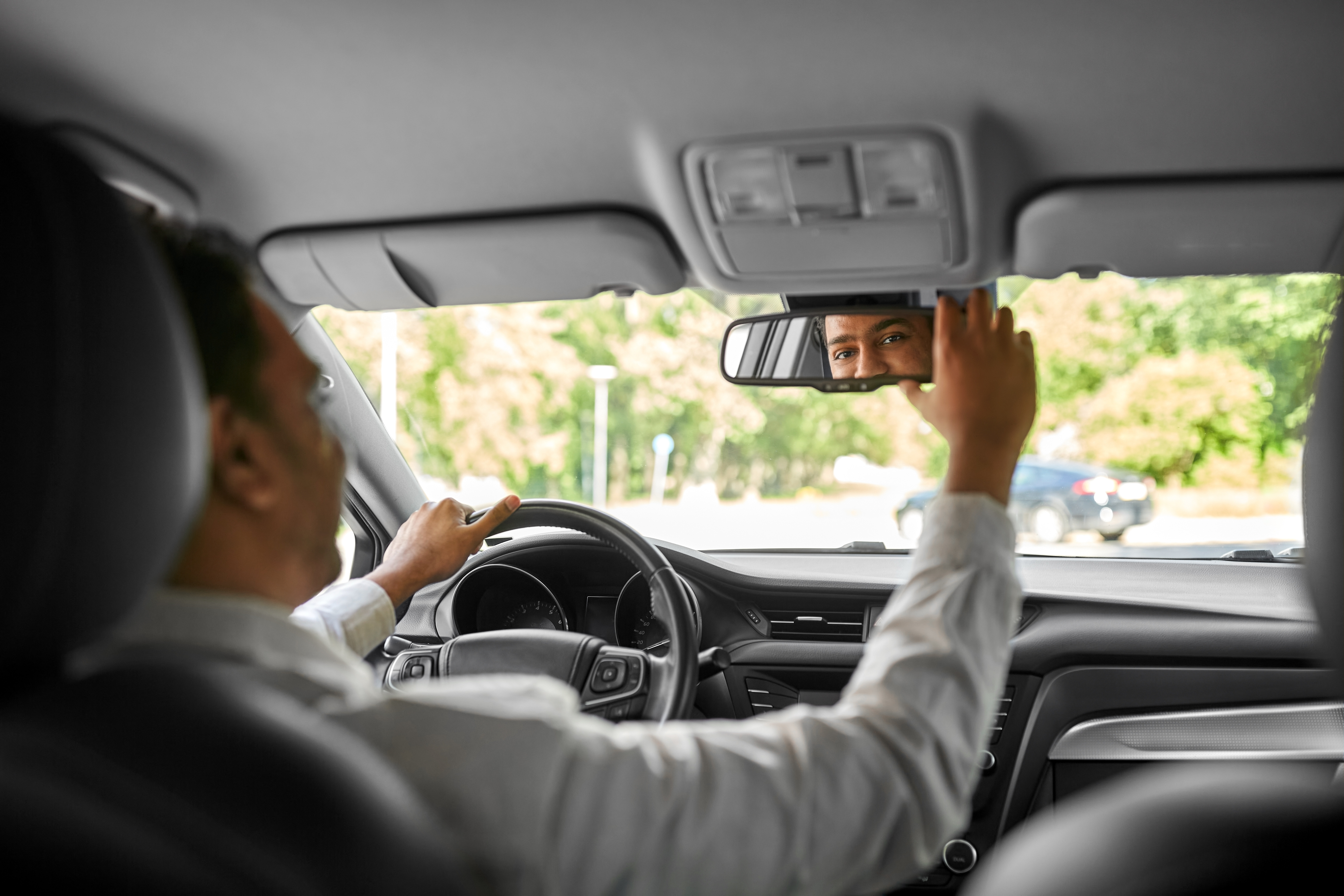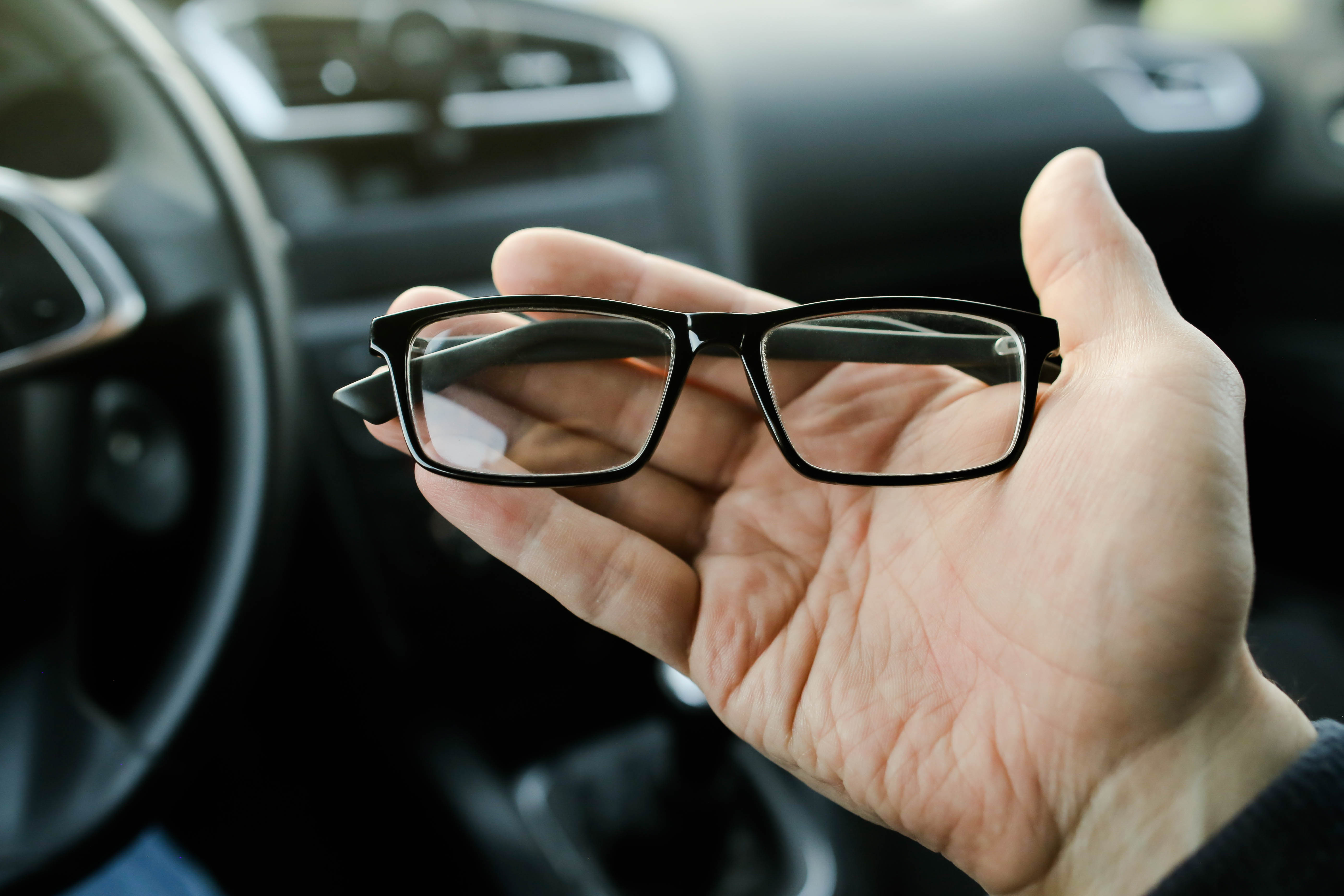How to Check if Your Eyesight is Fit for Driving

From reading road signs to keeping a safe distance from the car ahead, good vision plays a key role in safe driving. Whether you’re a new driver or have years of experience behind the wheel, you must meet the legal eyesight standards to drive in the UK.
If you're unsure what that involves, we’ve got you covered. Here's what you need to know about eyesight rules for UK drivers. We’ve covered what you can expect from your practical driving eyesight test and when a DVLA eye test is required to make sure it’s safe for you to drive.

Understanding the Eyesight Requirements for Driving
Clear vision isn’t just important for safe driving, it’s a legal requirement. The UK has strict eyesight requirements for driving that all drivers must follow. Let’s look at these in detail.
What Are the Legal Vision Standards for Drivers?
In order to drive, you legally must meet eyesight standards set by UK law. The visual standards for driving specify that when you have an eye test for driving at the opticians, you must have a visual acuity of at least decimal 0.5 (6/12) measured on the Snellen scale using both eyes together.
You should meet these standards if:
- You can read a number plate from 20 metres away
- You have no double vision
- You have a normal field of vision in at least one eye
But, if you’re not sure whether your eyesight meets these legal requirements to drive, it’s important to get a driving eyesight test before you get in the driver's seat. And, if your vision has changed since you got your licence, you need to book an eyesight test for driving before getting back behind the wheel.
The DVLA Eye Test: What is the vision test for driving?
When you sit your practical driving test, you’ll be asked to do the standard DVLA eye test for driving to gain your driving licence. This is to determine if you meet the standard of vision for driving legally.
This driving eye test simply involves correctly reading a registration plate from a distance of 20 metres. If you need glasses or contacts to meet these standards, you must wear them during your test and every time you drive.
How can I test my vision for driving at home?
The safest way to check you can see clearly is to take a driving eyesight test with a local optician. However, if you have immediate concerns and face a wait before any test is available, stand 20 metres – about five to six car lengths – back from a car and read its number plate. If you struggle, see an optician as soon as possible.
The DVLA says drivers must notify them if they have any problem with their eyesight that affects both eyes, or the remaining eye for those with one eye.
When to Get a Professional Vision Test for Driving
It’s important to get your eyes checked regularly throughout your life, but there are some points where it’s essential to get a professional vision test for driving.
Before your test
It could be a good idea to book a professional eyesight test for driving before you start learning to make sure you meet the legal requirements if you are unsure. You should also have your eyes checked if you ever struggle to read road signs or number plates. It’s also a good idea if you get eye strain and headaches, as it might mean you need to wear glasses on the road.
If you have an eye condition
If you have an eye condition, it’s really important to have regular DVLA eye tests at the opticians to check you’re still safe to drive. And, if you’ve noticed a recent change to your eyesight that could impair your ability to drive, it’s crucial to get this checked out before you get behind the wheel.
If you’re over 70
If you’re over 70, you’ll need to renew your licence every three years and confirm that your eyesight is still up to standard (even though there’s no formal re-test).
But it’s also a good idea to get regular driving eyesight tests as you age. Vision can start to change from your 40s onwards, so tests become even more important as you get older.
Common Eye Conditions That Can Affect Your Driving Ability
There are lots of common eye conditions that can impact driving, and some are more long term and serious than others. Giles Edmonds, clinical services director at Specsavers, said:
“There’s a whole host of factors that can impact your ability to see properly whilst driving. A wide range of these can be caused by environmental factors, but some of them are directly related to your eye health. It’s vital you get your eyesight tested every two years to make sure your eyes are performing as they should be.
“You wouldn’t miss your car’s MOT – don’t skip a health check-up for your eyes either.”
Let’s look at some of these conditions in more detail.
Blurred vision
Blurred vision can happen for many reasons. Serious issues like a detached retina, immediate causes like a migraine, or even simple things like high blood sugar might be to blame. But, when you’re on the road, one of the most common causes tends to be eyestrain.
It makes sense when you think about it. Muscles strain under sustained pressure; our eyes are no different. Wearing sunglasses while driving in bright conditions can help, as can factoring some time into your journey to simply give your eyes a rest. But if you’re finding that you struggle regularly, speak with an optician about whether you should be wearing glasses or contact lenses when you’re out on the road.
Distorted vision
Just as with blurred vision, there’s plenty of reasons why your eyesight could become distorted. A head injury, retinal disease and even near or farsightedness can all play a role. If you’re behind the wheel, and find your vision becomes wavy unexpectedly, look for somewhere to stop and see if it will pass. If it starts to become a regular problem, consult a medical professional on whether it’s still safe for you to drive.
Double vision
In most cases, double vision is a symptom of squint. If you’re finding it’s a regular occurrence, seek professional advice. Suffering from double vision in just one eye is less common, and can, in some cases, be indicative of cataracts.
If you find yourself suffering from double vision, you need to get an eye test for driving and shouldn’t drive until the DVLA has confirmed you’re allowed to go back on the road. It’s possible you’ll be allowed to wear an eye patch, to stop the double vision from occurring. But, like any other driver with vision in just one eye, you’ll need to demonstrate that you’re safe to do so.
Twitching eyes
A twitching eye usually isn’t a big deal. It often comes from stress, tiredness, or too much caffeine. But it can be a problem when you’re driving. The best course of action, if possible, is simply to find somewhere you can pull over and take a break. If you’re pulling up at a service station, though, have some water, rather than a coffee!
Watery eyes
Most of the time, watery eyes are caused by an allergy like hay fever, or simply by having something like an eyelash or grit in your eye. There could be some slightly more serious causes, though, such as a blocked tear duct or even dry eye syndrome (which, despite its name, can cause your eyes to produce too many tears).
If it’s something you know you tend to struggle with, you could keep some eyedrops or antihistamines in the car. For conditions that are more long-term, a GP or optician should be able to advise on whether it’s safe to be on the road.

What to Do If You Need Glasses or Contact Lenses to Drive
If you need glasses or contact lenses to meet the legal eyesight standard, you must wear them every time you drive. This applies whether you are driving a car, van, or motorbike.
Remember, you are legally responsible for making sure your vision is good enough whenever you are behind the wheel. If you know if you need glasses, it’s a good idea to keep a spare pair in the car in case you forget or lose your usual pair. You don’t want to be stuck without them if you need to drive.
Driving without the glasses or contact lenses you need is against the law and could lead to prosecution or invalidate your insurance.
Do You Need to Notify the DVLA About Your Eyesight?
The DVLA is clear on its eyesight requirements to drive. You must tell if you have a condition that affects both eyes (or one eye if you only have vision in that eye).
You must also let them know if you don’t meet the visual standards for driving, or you’ve been told by a medical professional that you may not. Failing to tell the DVLA about a notifiable eye condition can result in a fine of up to £1,000 and you may be prosecuted if you're involved in an accident as a result.
The conditions you have to tell the DVLA about include:
- Diabetic retinopathy (with laser treatment)
- Blepharospasm
- Diplopia (double vision)
- Glaucoma
- Nyctalopia (night blindness)
- Retinitis pigmentosa
The takeaway
Keeping your eyesight in check is key to staying safe on the road and meeting legal requirements. If you ever have doubts about your vision, don’t wait. Get a professional DVLA eye test to make sure you’re fit to drive.
Note: This guide is for general information only and does not constitute medical advice. Always speak to a qualified optician or healthcare professional if you have concerns about your vision or driving fitness.